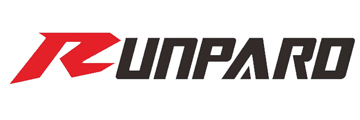Industrial mechanical arm is a mechanical and electronic device with anthropomorphic arm, wrist and hand functions.Mechanical and electronic devices that function as anthropomorphic arms, wrists, and hands;It can move any object or tool according to the time-varying requirements of the spatial position (position and attitude) to fulfill the operation requirements of an industrial production.If the clamp or welding gun, the car or motorcycle body for spot welding or arc welding;Handling die-casting or stamping parts or components;Laser cutting;Coating;Assemble mechanical parts and so on.
The ROBOT arm is the Chinese translation of the word "ROBOT".Due to the influence of film and television publicity and science fiction, people often think of robotic arms as mechanical and electronic devices that look like people.But this is not the case, especially with industrial mechanical arms, which often bear little resemblance to human appearance.According to national standards, industrial mechanical arms are defined as "their operators are automatically controlled, repeatable programming, multi-purpose, and can be programmed for more than 3 shafts.It can be fixed or mobile.Used in industrial automation applications ".An operator is also defined as "a machine whose mechanism is usually composed of a series of interlocking hinged or relative sliding members."It usually has several degrees of freedom to grab or move objects (tools or artifacts)."So a small robotic arm might be understood as a mechanical and electronic device that mimics the functions of a human arm, wrist, and hand.It can move any object or tool according to the time-varying requirements of the spatial position (position and attitude) to fulfill the operation requirements of an industrial production.If the clamp or welding gun, the car or motorcycle body for spot welding or arc welding;Handling die-casting or stamping parts or components;Laser cutting;Coating;Assemble mechanical parts and so on.
In order to solve the problems associated with writing applications in machine language, people first came up with the idea of using mnemonic symbols instead of machine instructions that were not easy to remember.The language in which these mnemonic symbols represent computer instructions is called symbolic language, also known as assembly language.In assembly language, each assembly instruction represented by a symbol corresponds to a computer machine instruction.Not only is it easier to check and modify program errors, but the location of instructions and data can be automatically assigned by the computer.The program written in assembly language is called the source program. The computer cannot directly recognize and process the source program. It must be translated into the machine language that the computer can understand and execute by some means.To write computer programs in assembly language, the programmer still needs to be familiar with the hardware structure of the computer system, so the programming itself is still inefficient and cumbersome.However, because assembly language is closely related to computer hardware system, it is still a very effective programming tool in some specific occasions, such as the system core program and the real-time control program, which require high efficiency in space and time.

